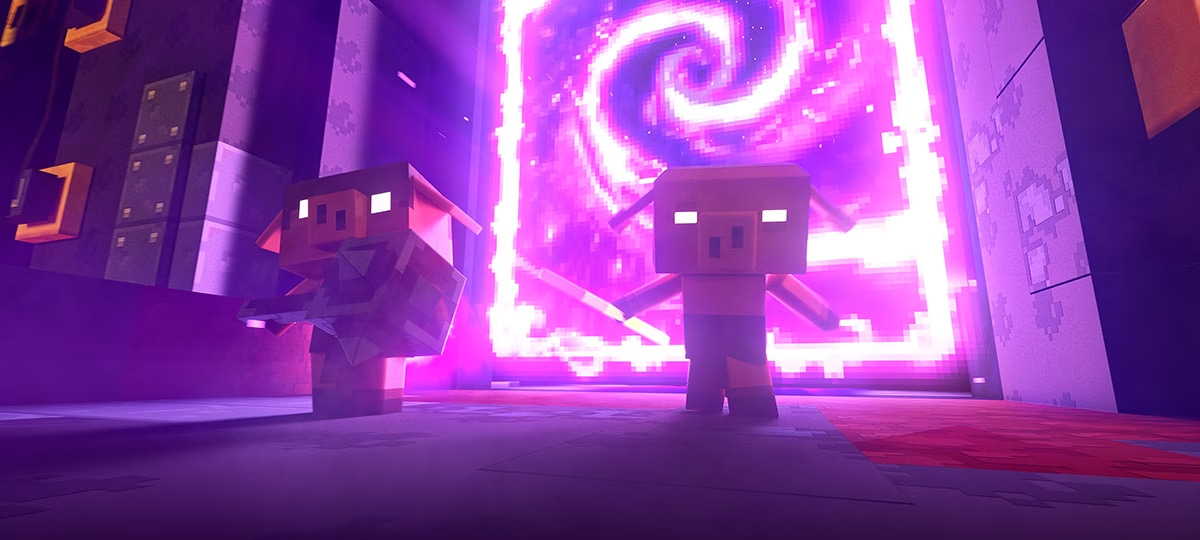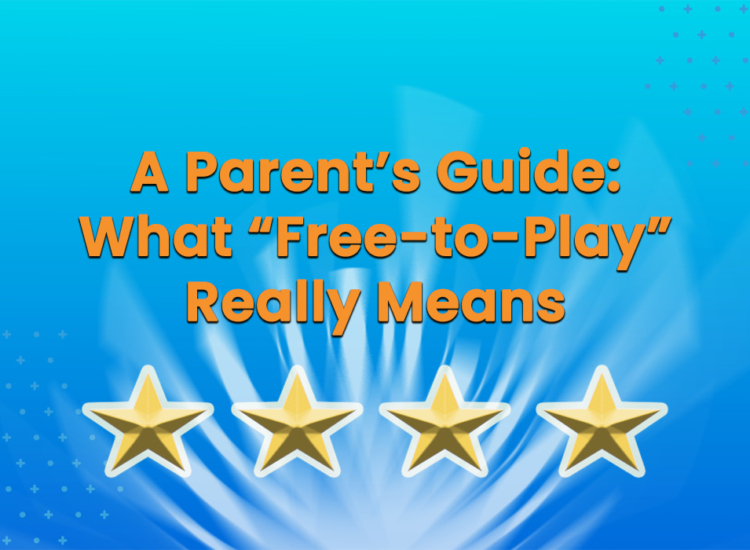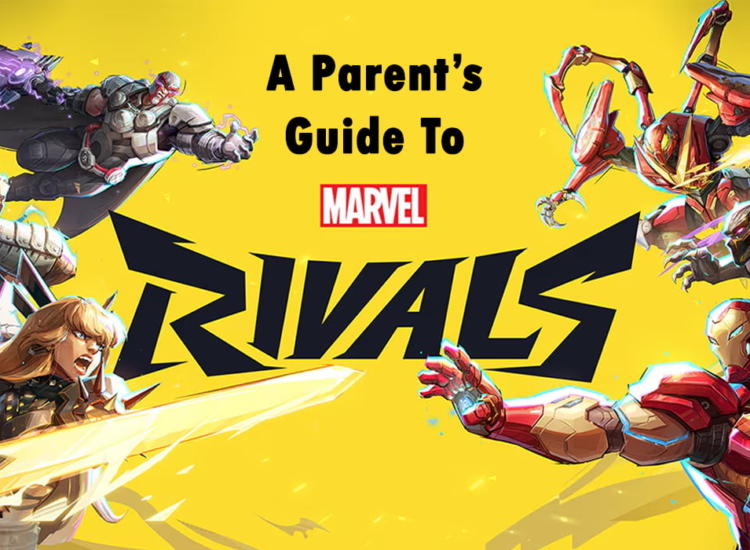What Parents Need to Know About Minecraft Legends
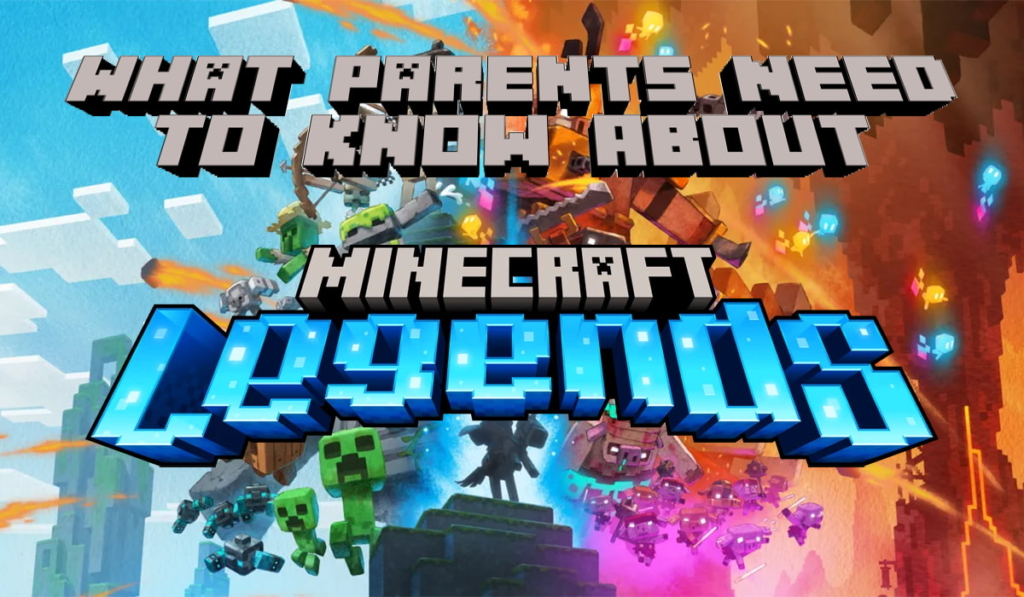
You’re probably familiar with the creative building game Minecraft (E10+), which is one of the most popular games in the world, especially with children. Minecraft Legends – a new game in the Minecraft universe – is set in a similar virtual world, but with some key gameplay differences. Here’s all the information you need to determine if Minecraft Legends is right for your kids.
What is Minecraft Legends?
Minecraft Legends is set in a colorful landscape that will be familiar to anyone who has played or seen the original Minecraft. Minecraft Legends is about mining for resources and building structures, but it’s also about using smart strategies to fight armies of enemies and defend bases in an adventure story.
The story sees hordes of enemy Piglins – blocky Orc-like creatures who generally live in an underground world called the Nether – invading Minecraft’s lush and bountiful Overworld. The Piglins are intent on plundering and ruling this beautiful land, and the main character is charged with defending the Overworld and retaliating against the Piglins.
How does Minecraft Legends play?
Your character is a warrior who rides one of a variety of mounts through different Minecraft-generated biomes, including a pretty jungle, and arid badlands. As you explore, you gather allies. These are often animals or creatures, aka “mobs.” To earn allies you ride up to them, and wave a magical banner. The critters then follow the player around, effectively creating an army.
You can also send magical fairies to gather resources like wood from trees, which can be used to build useful structures. These include “spawners” which manufacture more powerful helpers and followers. These include traditional Minecraft baddies, like Creepers, who are now allied with you against the Piglins.
When you arrive at a Piglin base, you should have gathered an army that’s made up of a good collection of fighters. Different kinds of mobs have different strengths and weaknesses, so mustering a correctly balanced army is a central winning strategy.
During the ensuing battle, you direct a beam of light (known as the Banner of Courage) at locations where you want your fighters to focus their attention. Just like mobs, Piglins come in different shapes and sizes, and some are far more difficult to beat than others.
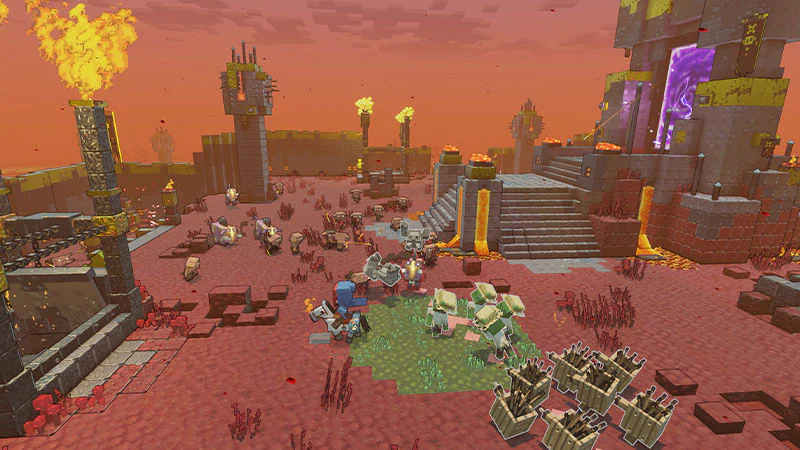
The Piglins have built a great variety of fortresses across the Overland, so it’s up to the player to figure out each one’s weaknesses by wisely spending available resources, amassing the right mix of allies that will take down their increasingly formidable defenses, and planning attacks that will take advantage of enemy weaknesses.
Does Minecraft Legends have an Online Multiplayer Option?
Yes. Players can work together in teams of four to take down the Piglins. Or you can join one of two teams, made up of up to four players on each side, to build your own bases and try to destroy the other team. Make sure you set parental controls on your kids’ devices to manage your child’s online communications, including with whom your kids can chat while playing online. Of course, you can always block communication entirely!
Is Minecraft Legends Appropriate for Children?
Minecraft Legends is rated E10+ (Everyone 10+) by ESRB, with a Content Descriptor for Fantasy Violence and Interactive Elements including Users Interact and In-Game Purchases.
The story is heavily inspired by classic fairy tales and children’s stories. It features familiar tropes such as a magic lute that summons reinforcements, a banner that instills courage in fellow 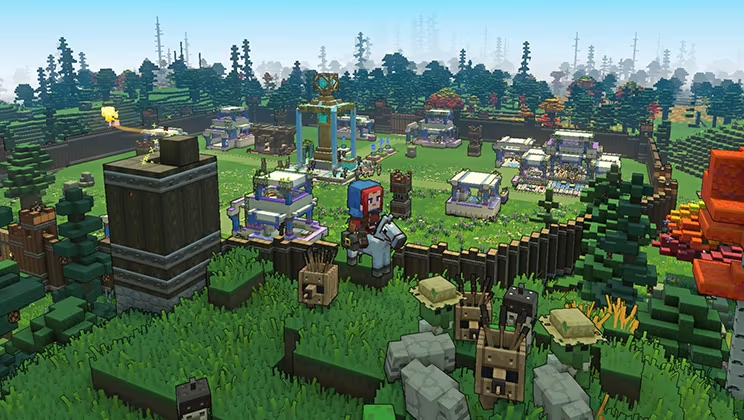
Sympathetic characters are cute and friendly, while the hog-like Piglins are faintly comedic, although their strongholds have a demonic quality like pillars of fire, ominous artifacts, and cackling villains. The combat can be noisy and frenetic, but defeated Piglins disappear from the screen without evidence of wounds or fallen bodies.
Players use swords, arrows, and fire to defeat pixelated enemies. Battles are accompanied by cries of pain and small explosions. One cutscene depicts a villain throwing/shooting fiery arrows at a bunny and other unarmed characters.
ESRB’s Rating Summary for Minecraft Legends provides more details that may be important to consider as you decide if Minecraft Legends is appropriate for your family.
Where Can I Play Minecraft Legends?
Minecraft Legends is available for the Nintendo Switch, PlayStation 4, PlayStation 5, Windows PC, Xbox One, and Xbox Series X|S.
Players use swords, arrows, and fire to defeat pixelated enemies.
How Much Does Minecraft Legends Cost?
Minecraft Legends costs $39.99 on all platforms, or $49.99 for the Deluxe Edition, which comes with extra cosmetic skins for player characters to wear. Skins and cosmetics will also be available through in-game purchases.
Staying Involved with Your Kids’ Playing
As always, understanding the games your children are playing is key to making sure they have appropriate experiences.
Checking ratings, researching online, or watching your children play for a while is not only a great way to stay informed, but also helps nurture a judgment-free environment around something they love. You may even want to pick up the controller and play the game yourself. Playing immersive strategy games with family and friends can be a great opportunity to connect and enjoy each other’s company.
Video game devices, such as consoles, PCs, and smartphones, offer parental controls that help you manage what your kids play, when and for how long, with whom, and whether they can spend money on new games or in-game purchases. Some video game storefronts, like Steam and the Epic Games Store, include parental controls as well. You can find step-by-step parental controls guides at ParentalTools.org.
While you’re there, visit ESRB’s Family Gaming Guide for more tips about how you can help to ensure positive video game experiences for your kids.

